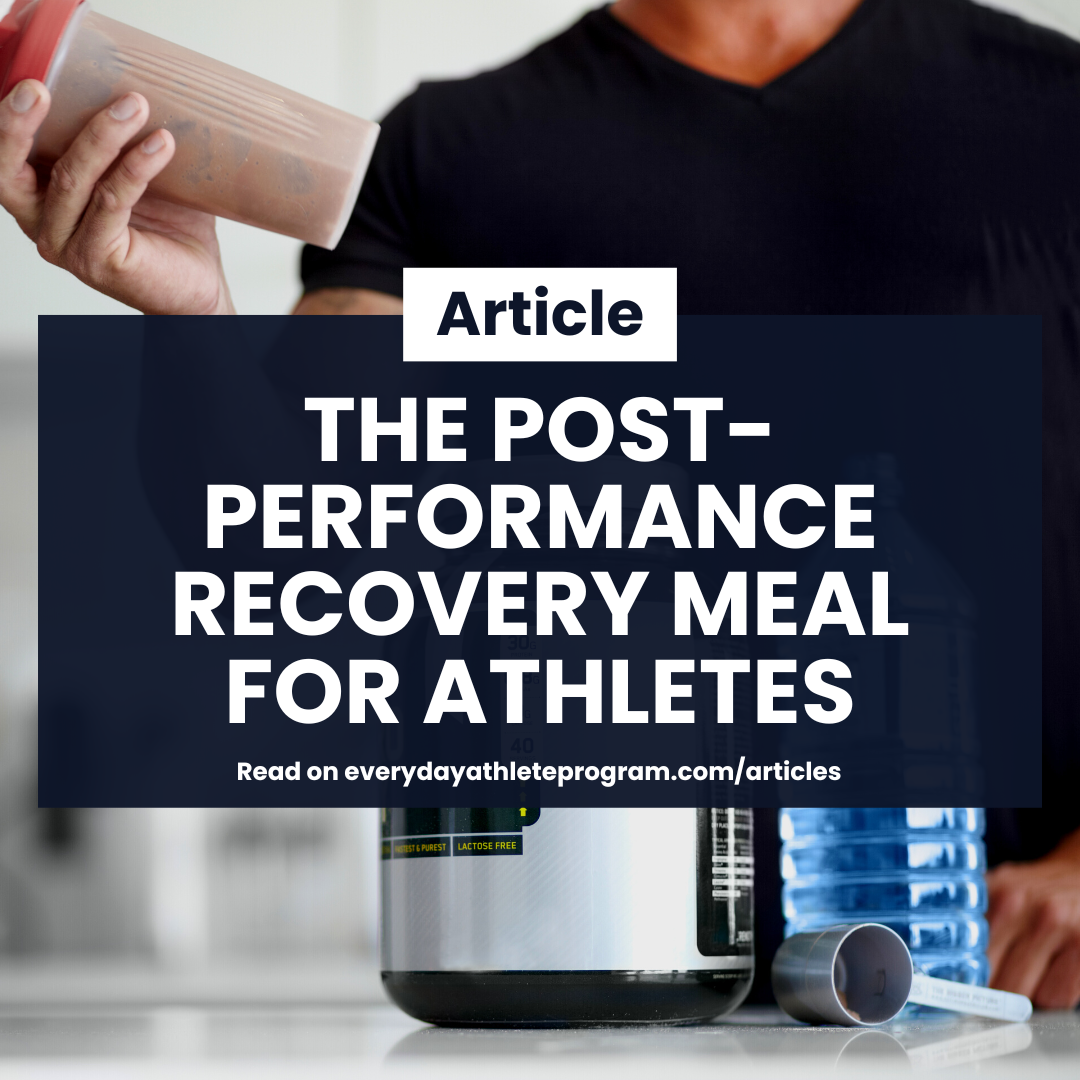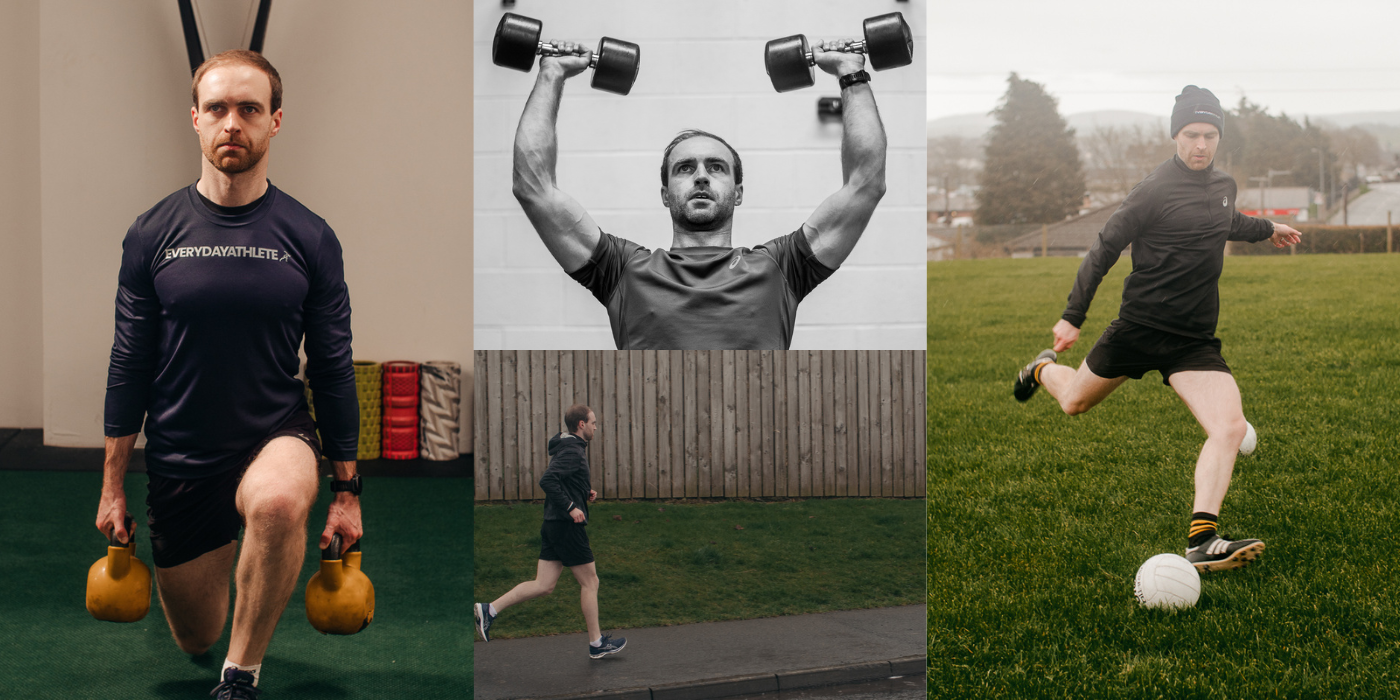The definition of recovery is, “returning to a normal state of health, mind, or strength.”
In the context of sport and athletic training, that means that after completing a training session, the aim is to get back to the point where you would be able to repeat that same session with equal or greater intensity in the days that follow.
Provided that training is appropriate, this repeated cycle of stimulus followed by recovery will allow the body to adapt accordingly, thereby increasing strength, endurance, muscle size, speed, or whatever other training goal you’re trying to achieve.
This can be seen in the graph below, where the line moves downwards with each training session (signaling fatigue), and then moves upwards between sessions towards the previous baseline (signaling recovery) and beyond it (signaling adaptation).
Issues occur when we don’t allow for adequate recovery and adaptation, where we go into the subsequent sessions under-recovered.
If this is repeated on an ongoing basis, it is likely to lead to fatigue, diminished performance, and often, injury.
THE “RECOVERY WINDOW”
If you’ve ever done a hard training session, you’ll already know that the recovery isn’t done only in the hours after training, and your sore legs the morning after will let you know that.
That is to say that the so-called “recovery window” extends well beyond the hour after a training session, and often into the day or days following it.
However, that period of time immediately after a training session offers you the first opportunity to maximise your recovery for upcoming sessions, and therefore shouldn’t be taken lightly.
There are many aspects of recovery worth touching on, and these will be touched on in other articles, but for this article, the focus will be on the nutritional aspect of the post-performance or post-training meal.
You can break the nutritional approach during this period into 3 “R”s: Rebuild, Refuel, and Rehydrate.
1. Rebuild
During intense physical training, muscle damage can occur.
This muscle damage usually isn’t enough to cause an injury, but after hard training sessions, it can often result in soreness, as well as reduced strength, endurance, and mobility.
This isn’t necessarily a negative thing, and actually may be a factor that signals adaptations in the muscle.
However, if it persists into the next training session, it is usually a sign that you’re not fully recovered.
Previous articles illustrated the role of protein in providing amino acids to the body, and the idea of amino acids being seen as the building blocks of muscle tissue.
In the post-training period, there is an increased demand for these amino acids, given their role in the repair of muscle tissue.
For this reason, consuming protein in the post-training period is advised.
20-40g of protein for a high-quality source is generally enough to stimulate muscle protein synthesis (I.e. the creation of new muscle tissue.)
To put that in context, a few common examples of protein-rich foods include:
Medium Chicken Breast: 30-40g of protein
4 eggs: 24g of protein
1 Scoop whey protein: 20-25g of protein
Medium steak: 60-80g of protein
Salmon Fillet: 30-40g of protein
Pot of greek yoghurt: 20g of protein
2. Refuel
Outside of repairing the tissues (such as muscle) damaged in training, being ready for upcoming sessions also involves being properly fuelled.
That fuelling process can start immediately after the previous session.
Previous articles discussed that the main energy source used in high-intensity athletic training and sport is glycogen, which is the stored form of carbohydrates in the body.
Because of this, the more energy is used in these tough training sessions, the more the body’s level of glycogen stores will become depleted.
Starting the refueling process in the post-training period by consuming carbohydrates is important for this reason.
In addition, the body’s ability to store glycogen is increased following exercise, making it an even more important time to start consuming carbohydrates.
This becomes less important if you have a long period of time (2-3 days, for example) between sessions, where you will have a lot more opportunity to consume carbohydrates as part of your daily diet in between sessions.
But for someone who trains most days or even twice a day, consuming carbohydrates post-training becomes more important when it comes to being refueled by the next session.
In the post-training period, general recommendations are to consume 1-1.5g per kg of bodyweight within the hour following the training session (e.g. 80-120g of carbohydrates for an 80kg athlete).
However, this will vary greatly based on the intensity and duration of the session, as well as your overall calorie intake.
For example, someone who is in a fat-loss phase may not want to allot as many calories to the post-training period, and may prefer to spread them out throughout the day, allowing for more enjoyable meals, and therefore better dietary adherence.
And someone who just finished a low-intensity sports skill session will obviously not need as much as someone who just ran 20 miles.
To put the amounts into context, a few common examples of carbohydrate-rich foods include:
100g rice (raw weight): 75g of carbohydrates
400g potatoes: 68g of carbohydrates
100g pasta (raw weight): 75g of carbohydrates
2 slices of bread: 25g of carbohydrates
1 sports drink: 32g of carbohydrates
3 rice cakes: 20g of carbohydrates
1 large sweet potato: 30-40g of carbohydrates
3. Rehydrate
Similarly to carbohydrates being depleted as a result of intense training, water and electrolytes can also become depleted, primarily through sweat and breathing out water vapour.
Previous articles outlined the importance of maintaining adequate levels of fluids and electrolytes during training and competitive events.
Again, once these have been depleted, in order to ensure you are ready for the next session, it is important to replenish them by the time the next session comes around.
As with carbohydrates, this can be done throughout the period between sessions, and the importance of the immediate post-training period increases as the time between sessions decreases.
However, even in cases where there is plenty of time between sessions, getting back to a baseline level of hydration as soon as possible after the session is still important.
This is because of the knock-on effects that dehydration can have, including decreased blood flow, negative impact on sleep, and poorer digestion, all of which can have an indirect effect on recovery.
In terms of practical application, you can keep it simple by subtracting your post-training bodyweight from your pre-training bodyweight (you don’t have to do this before and after every session - just enough times to give you an average), aiming to consume that weight in water in the hours following the training session or competitive event.
Electrolytes should also be consumed within this period, which could be in the form of a supplement, and/or salt within your food.
A BONUS “R” - REST
The topic of rest deserves an article in itself, and it will get one, but suffice it to say that any discussion of recovery would be insufficient if it didn’t take into account the idea that the body recovers at rest.
That means that the best post-training meal means very little if you’re constantly stressed, sleeping 5 hours per night, and training so much that the body doesn’t have time to recover in between.
With that said, once those things are addressed, elements like the post-training meal, as discussed above, become a priority.
Article Written By Conor O’Neill
Conor O’Neill is a Nutritionist, Strength & Conditioning coach, Psychologist, and Author.
He has helped 1000+ everyday athletes to pursue excellence in their physique and performance through optimising their nutrition, training, and psychology.
You can find out more about The Everyday Athlete Program by going to everydayathleteprogram.com/coaching.



